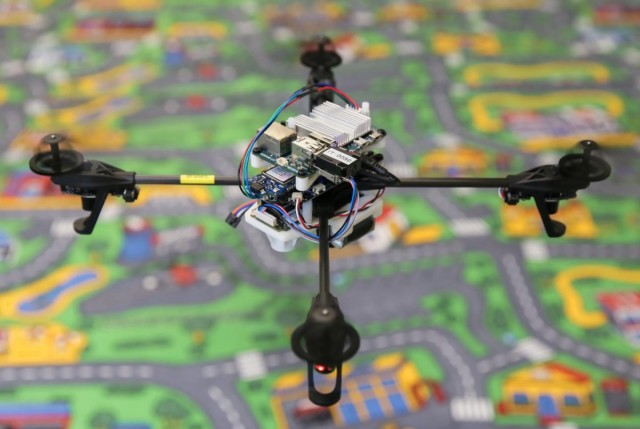“Our new technology allows safe operation of drones beyond the operator’s line of sight, which is crucial for commercial use of drones, such as parcel delivery,” says Prof. Davide Scaramuzza, co-inventor and Director of the Robotics and Perception Group at the University of Zurich.
The growing popularity of drones has raised major safety concerns. Because drones can run out of power, forcing them to land immediately, they must be able to detect safe landing spots and properly execute landing operations. Furthermore, potential crash situations arise when drones temporarily lose their GPS position information, for instance, when flying close to buildings where GPS signal is lost. In such situations, it is essential that drones can rely on back-up systems and regain stable flight.
The drones of the UZH research group are equipped with a single camera and acceleration sensors. Their orientation system emulates the human visual system and sense of balance. As soon as a toss or a failure situation is detected, computer-vision software analyses the images to identify distinctive landmarks in the environment and restore balance. All image processing and control runs on a smartphone processor onboard the drone. This renders the drone safe and able to fulfil its mission without any communication or interaction with the operator.
“Our system works similarly to a tight-rope walker. When you balance on a rope, you fixate on some static points in the environment and shift your weight accordingly to restore balance,” says Matthias Faessler, co-inventor of the technology and researcher in Scaramuzza’s group.
The same software builds a 3D model of the environment, which is used to group the terrain beneath the drone into “risky” and “safe” landing sites. If an emergency landing is required due to low battery or system failure, the drone will automatically detect and land on a flat, safe location without any human intervention.
About the Robotics and Perception Group
Prof. Dr. Davide Scaramuzza founded the Robotics and Perception Group at the University of Zurich in February 2012. The group consists of twelve researchers from the fields of mechanical, electrical, and informatics engineering. The group’s mission is to develop autonomous machines that can navigate independently using only onboard cameras.
Source: Press Release

